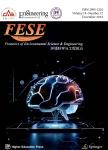Development of a cloud condensation nuclei(CCN)counter using a laser and charge-coupled device(CCD)camera
原子核(CCN ) 阻止使用激光和电荷耦合的设备(电荷耦合器件) 的一个云冷凝作用的开发照相机作者机构:School of Environmental Science and EngineeringGwangju Institute of Science and TechnologyGwangju 500-712The Republic of Korea
出 版 物:《Frontiers of Environmental Science & Engineering》 (环境科学与工程前沿(英文))
年 卷 期:2011年第5卷第3期
页 面:313-319页
核心收录:
学科分类:07[理学] 070202[理学-粒子物理与原子核物理] 0702[理学-物理学]
主 题:aerosol cloud condensation nuclei(CCN)counter ultrafine particle
摘 要:A continuous flow streamwise thermal gradientcloud condensation nuclei(CCN)counter with anaerosol focusing and a laser-charge-coupled device(CCD)camera detector system was developed *** countingperformance of the laser-CCD camera detector system wasevaluated by comparing its measured number concentrationswith those measured with a condensation particlecounter(CPC)using polystyrene latex(PSL)and NaClparticles of varying *** CCD camera parameters(***,gain,gamma,and exposure time)wereoptimized to detect moving particles in the sensing volumeand to provide the best image to count *** CCNcounter worked well in the particle number concentrationrange of 0.6-8000#·cm^(-3)and the minimum detectablesize was found to be 0.5μ*** supersaturation in theCCN counter with varying temperature difference wasdetermined by using size-selected sodium chloride particlesbased on Köhler *** developed CCNcounter was applied to investigate CCN activity ofatmospheric ultrafine particles at 0.5%*** showed that CCN activity increased with increasingparticle size and that the higher CCN activation forultrafine particles occurred in the afternoon,suggesting thesignificant existence of hygroscopic or soluble species inphotochemically-produced ultrafine particles.




